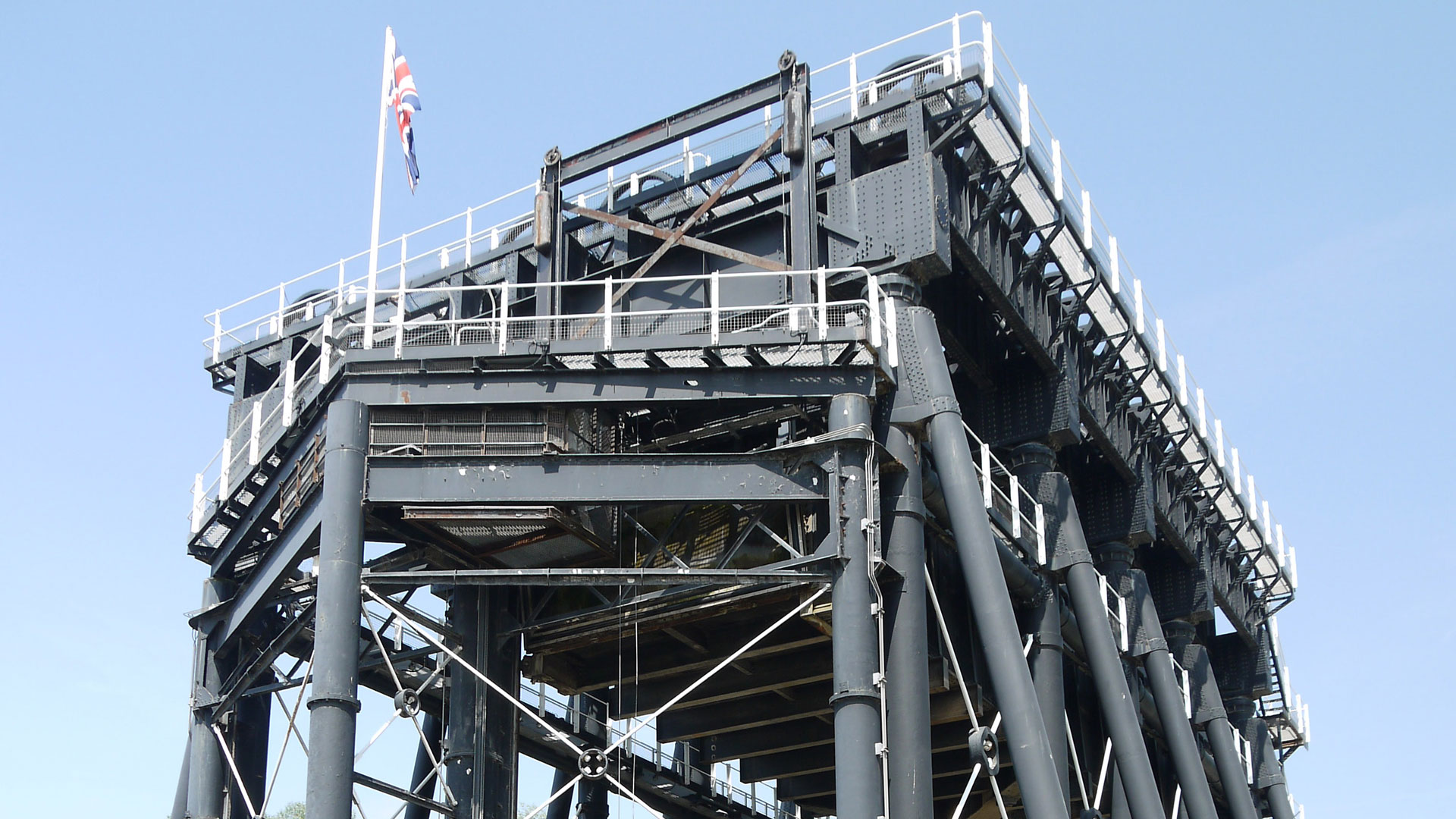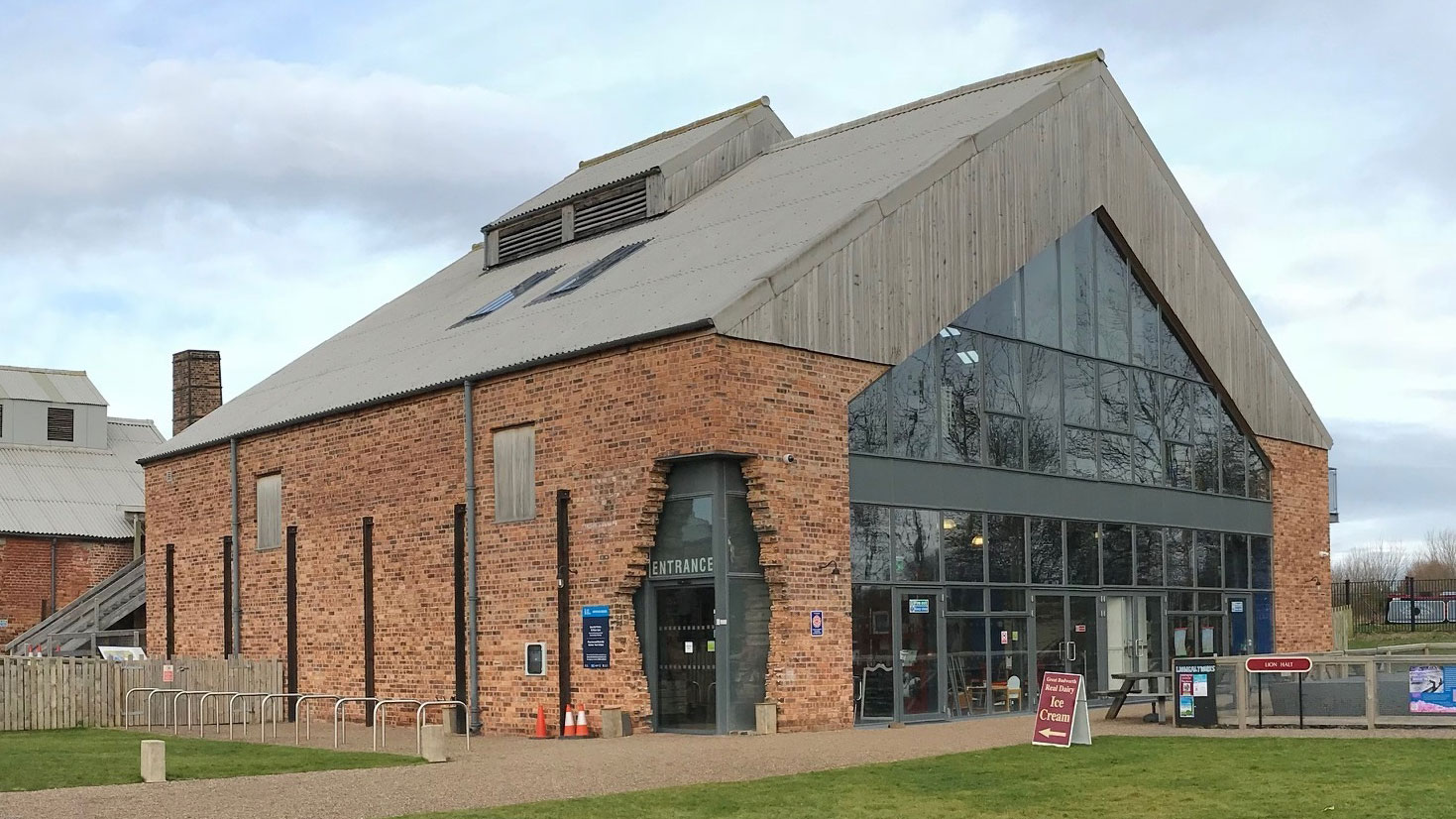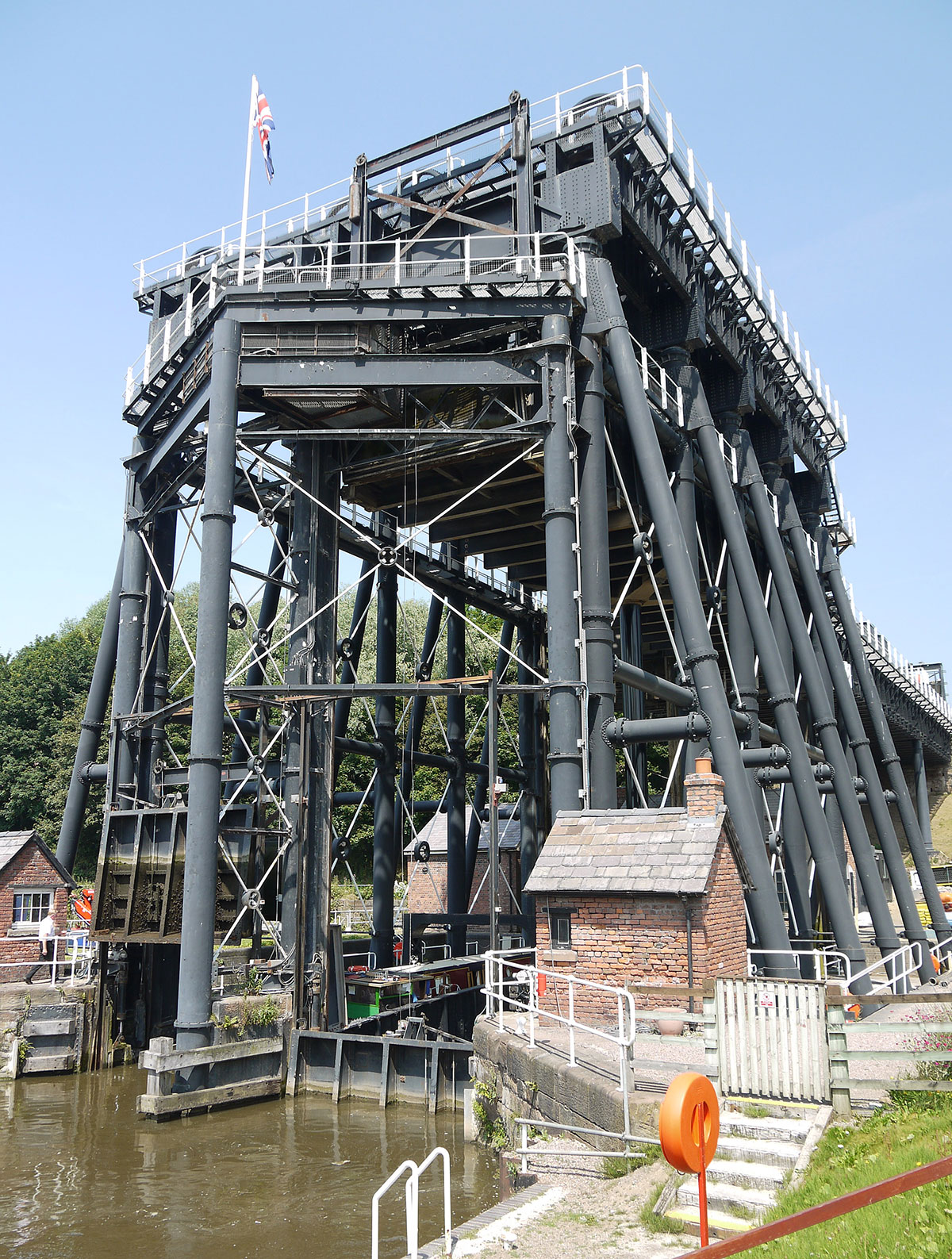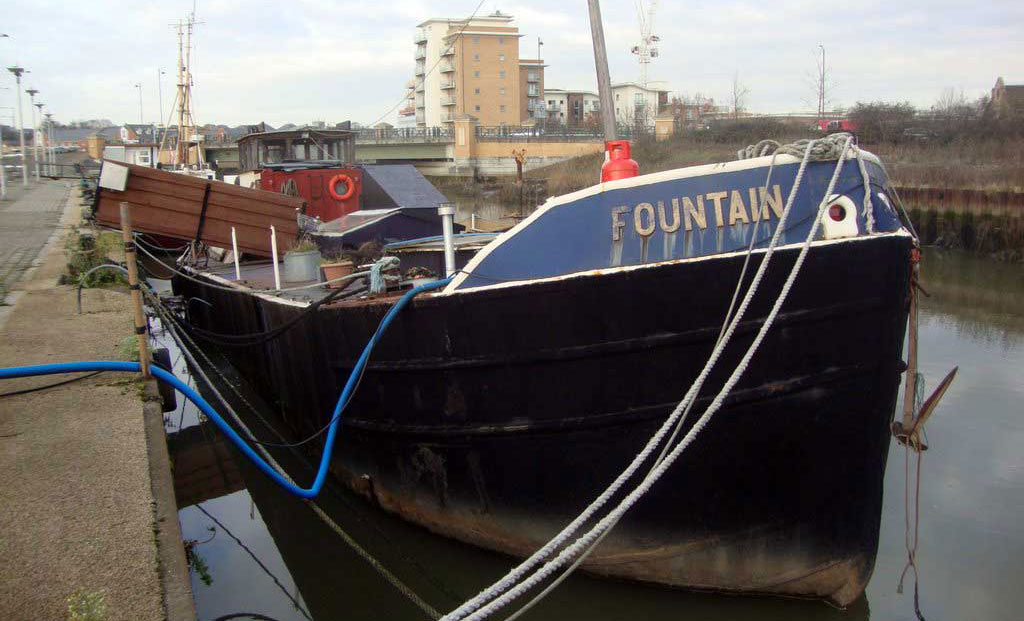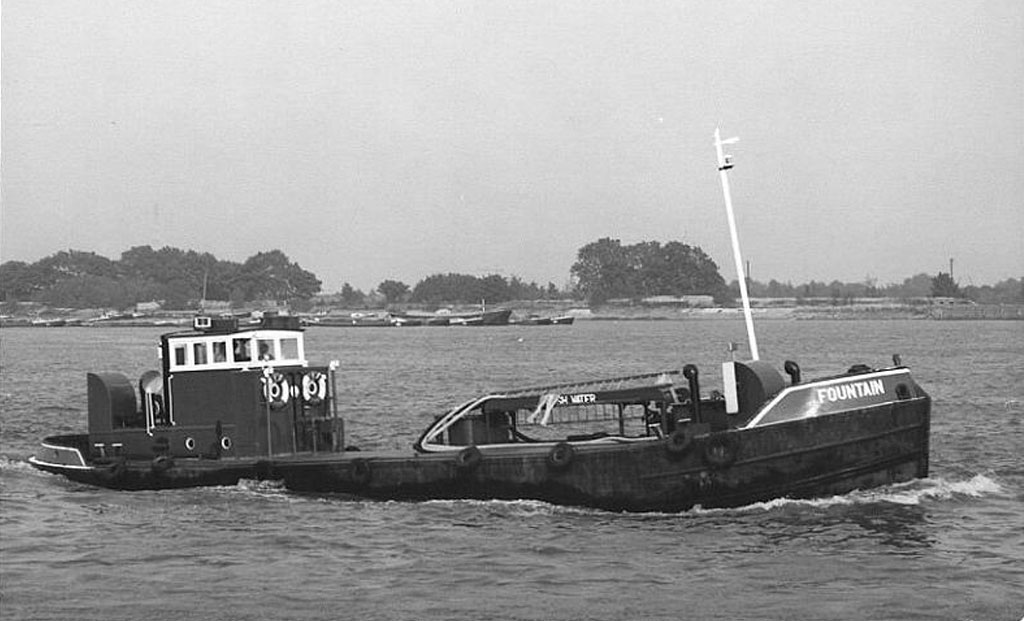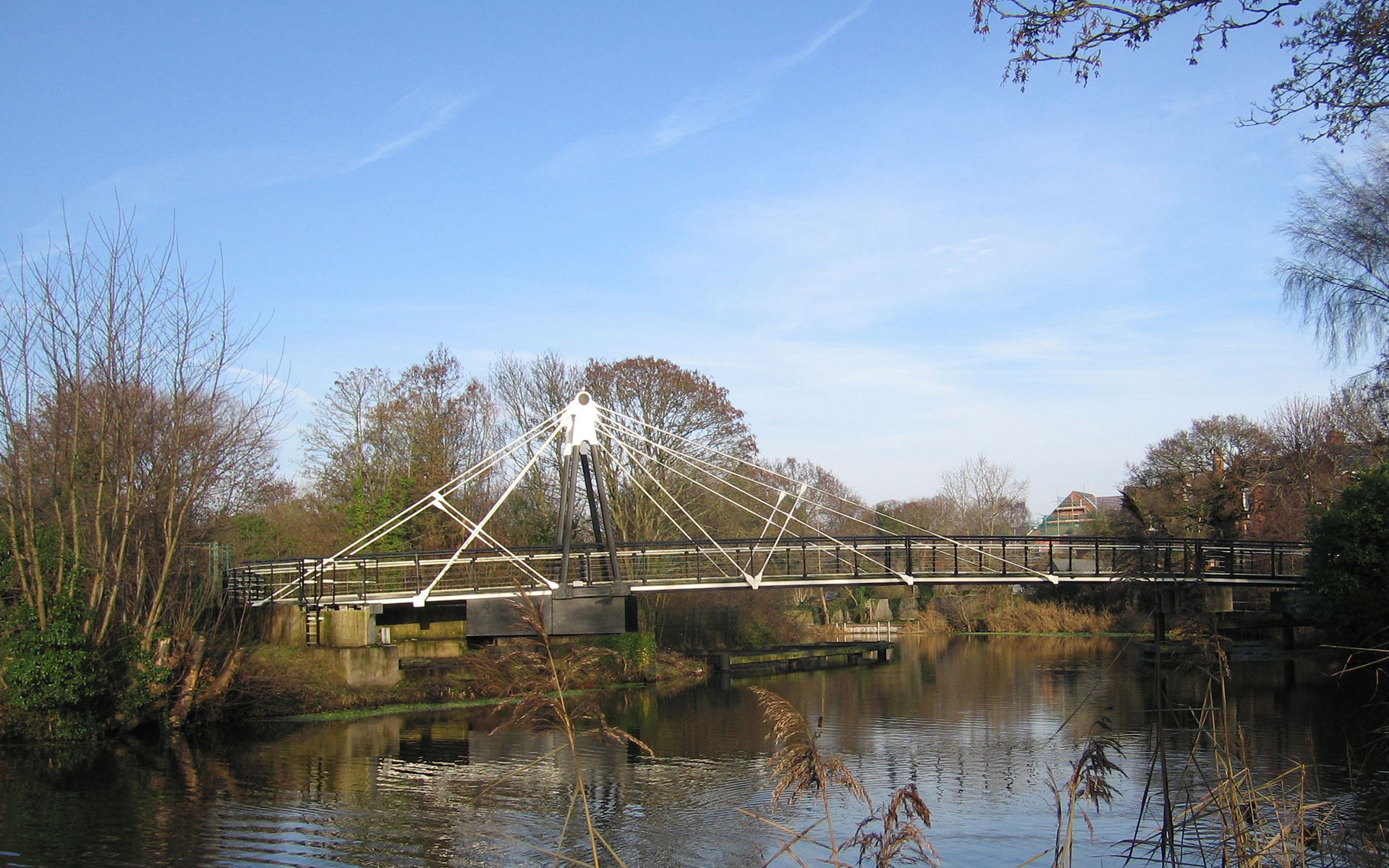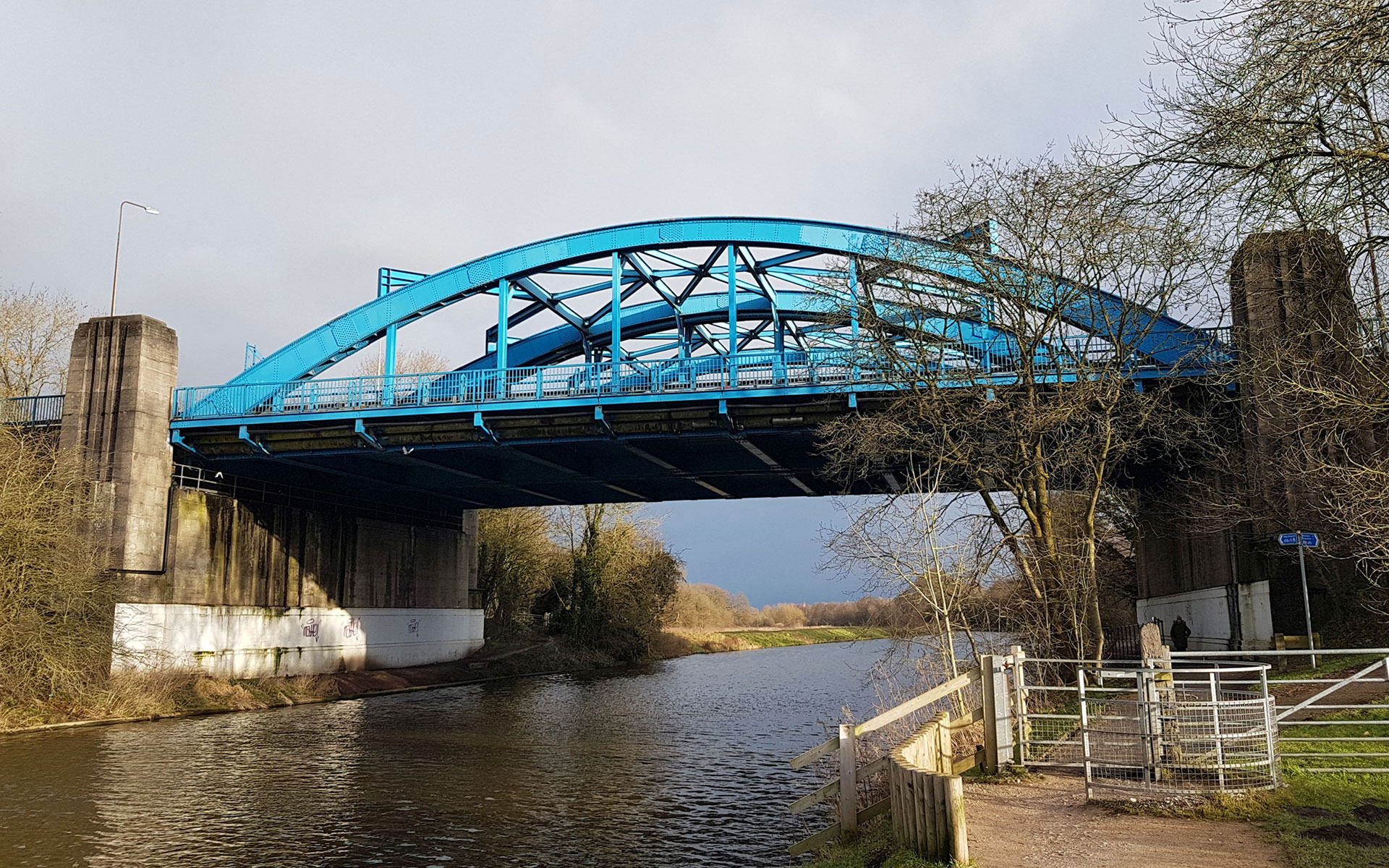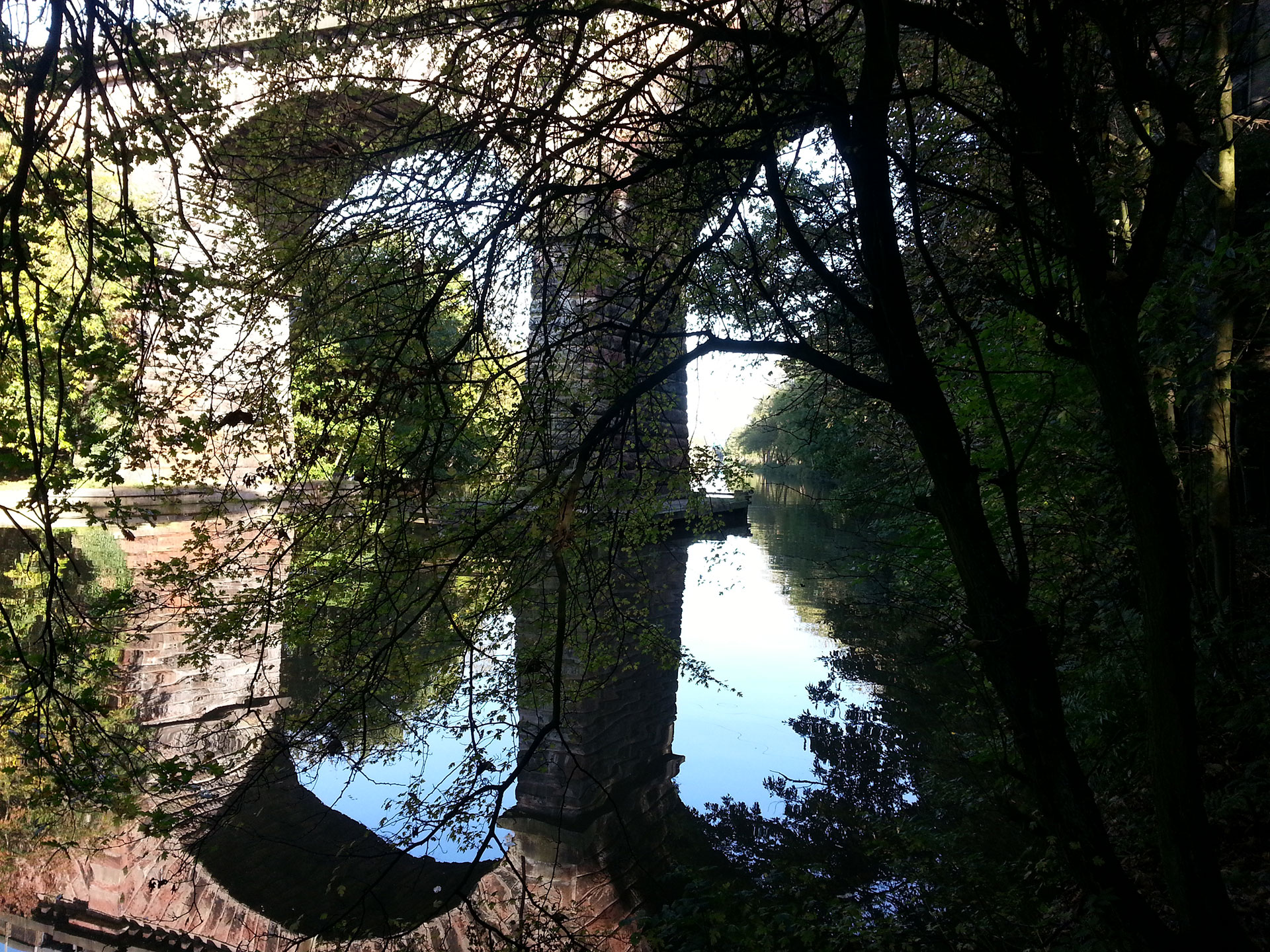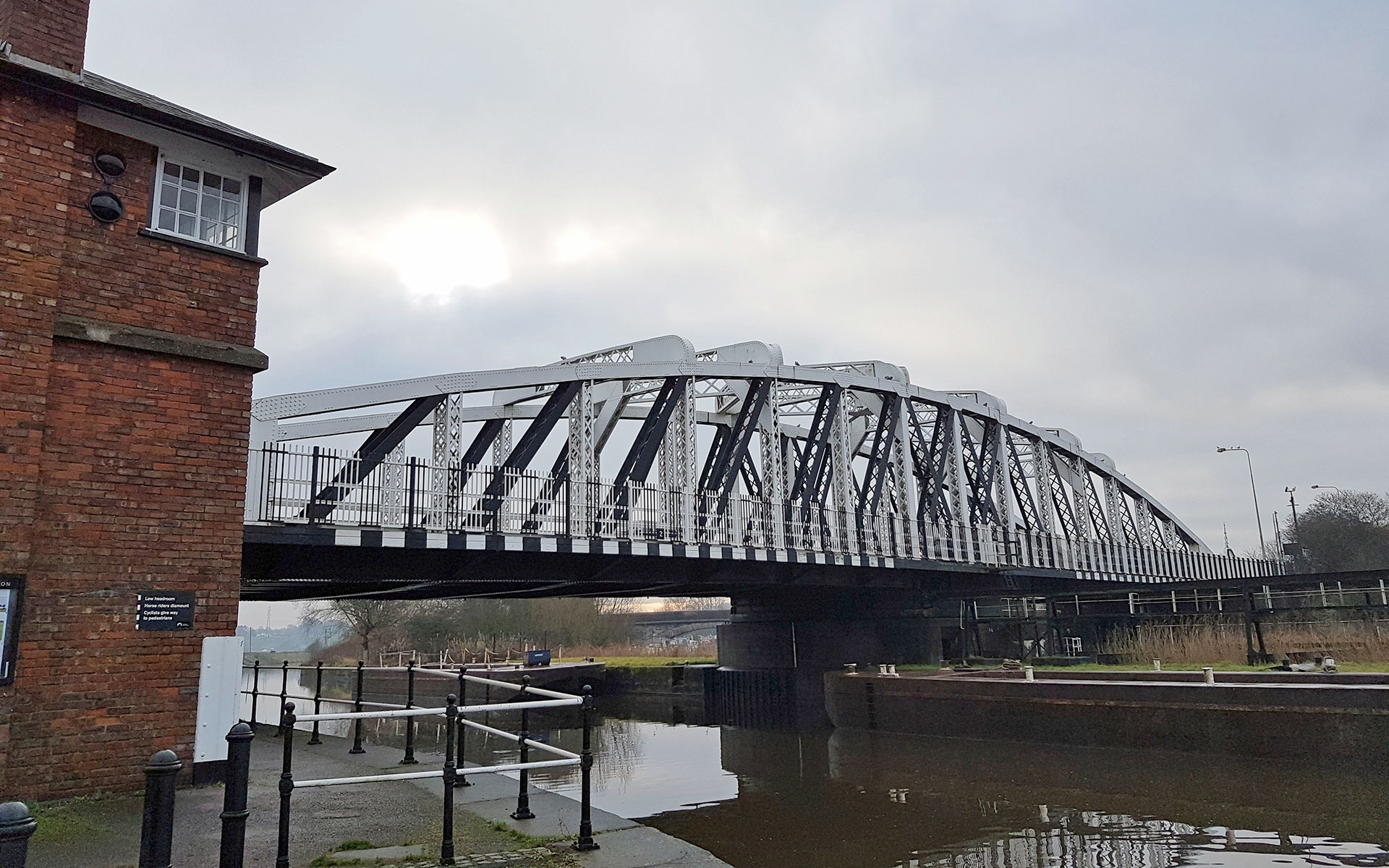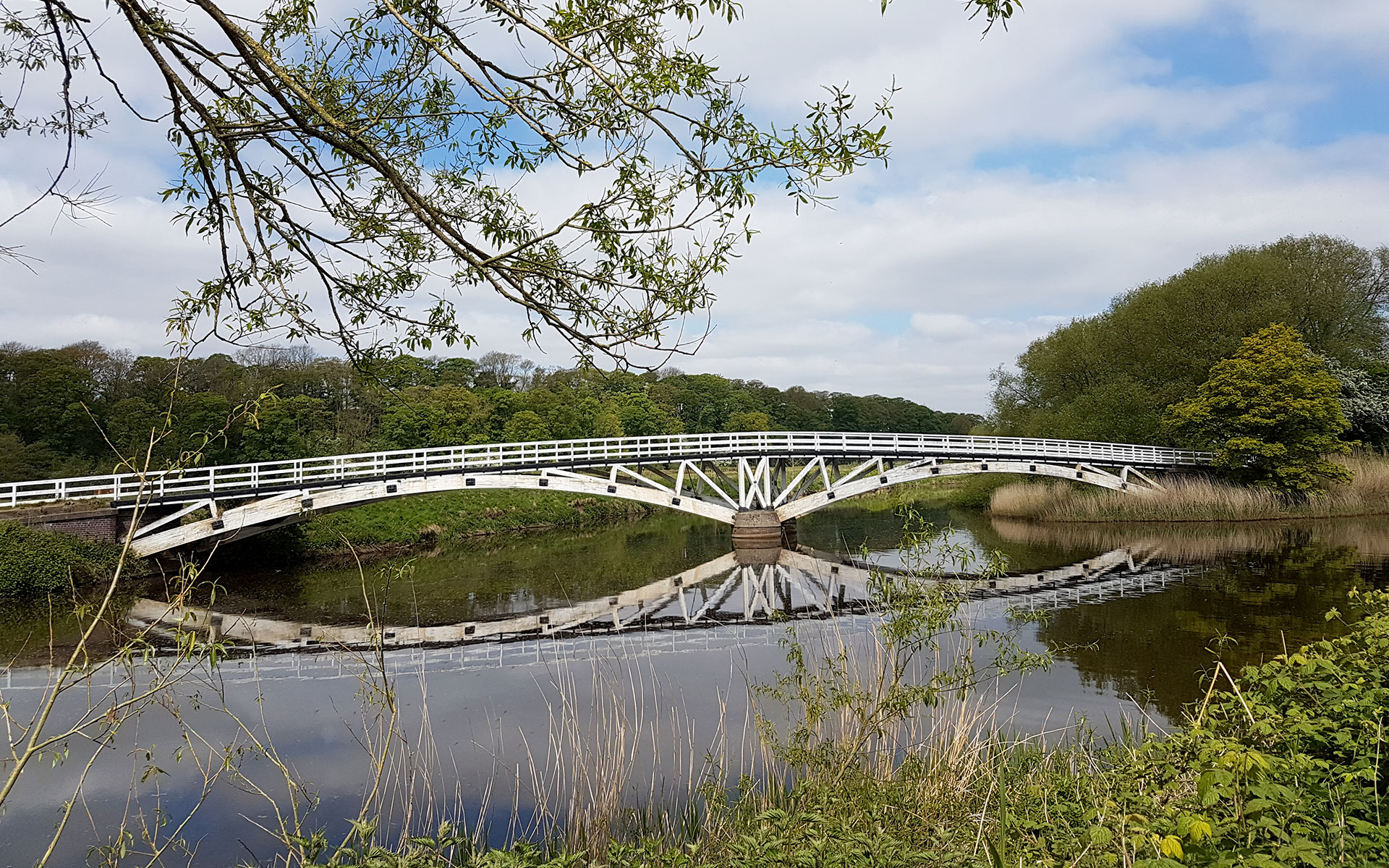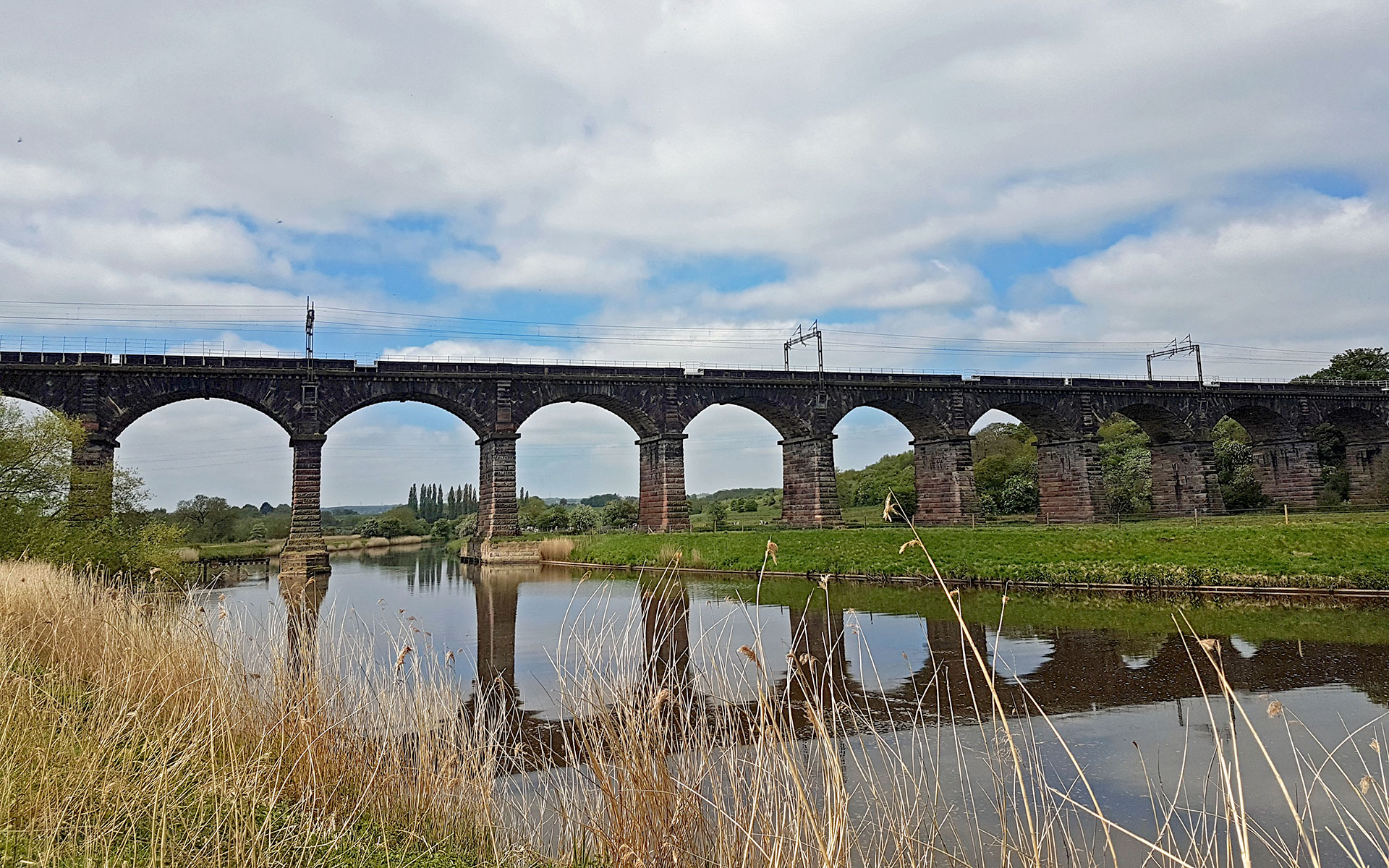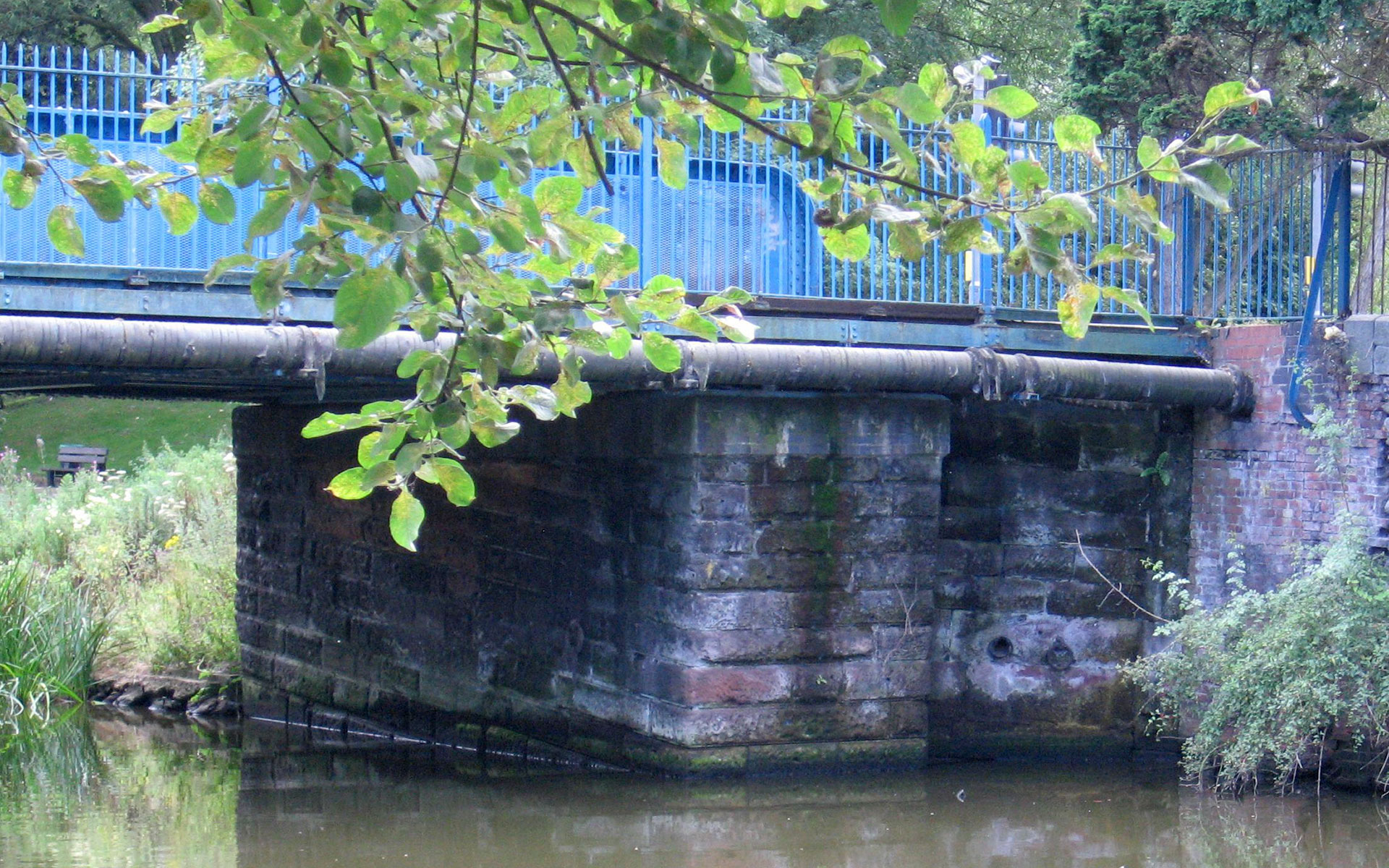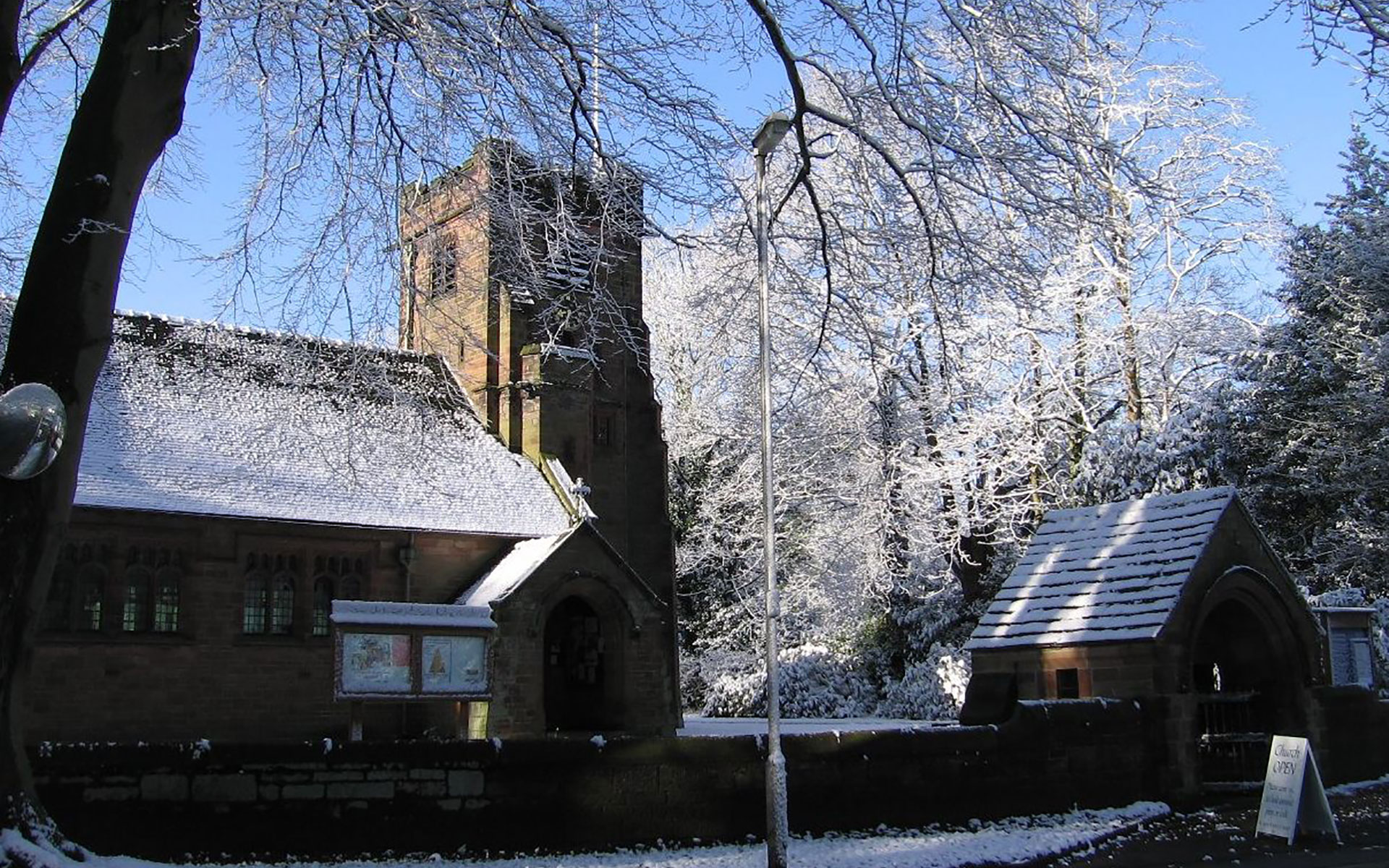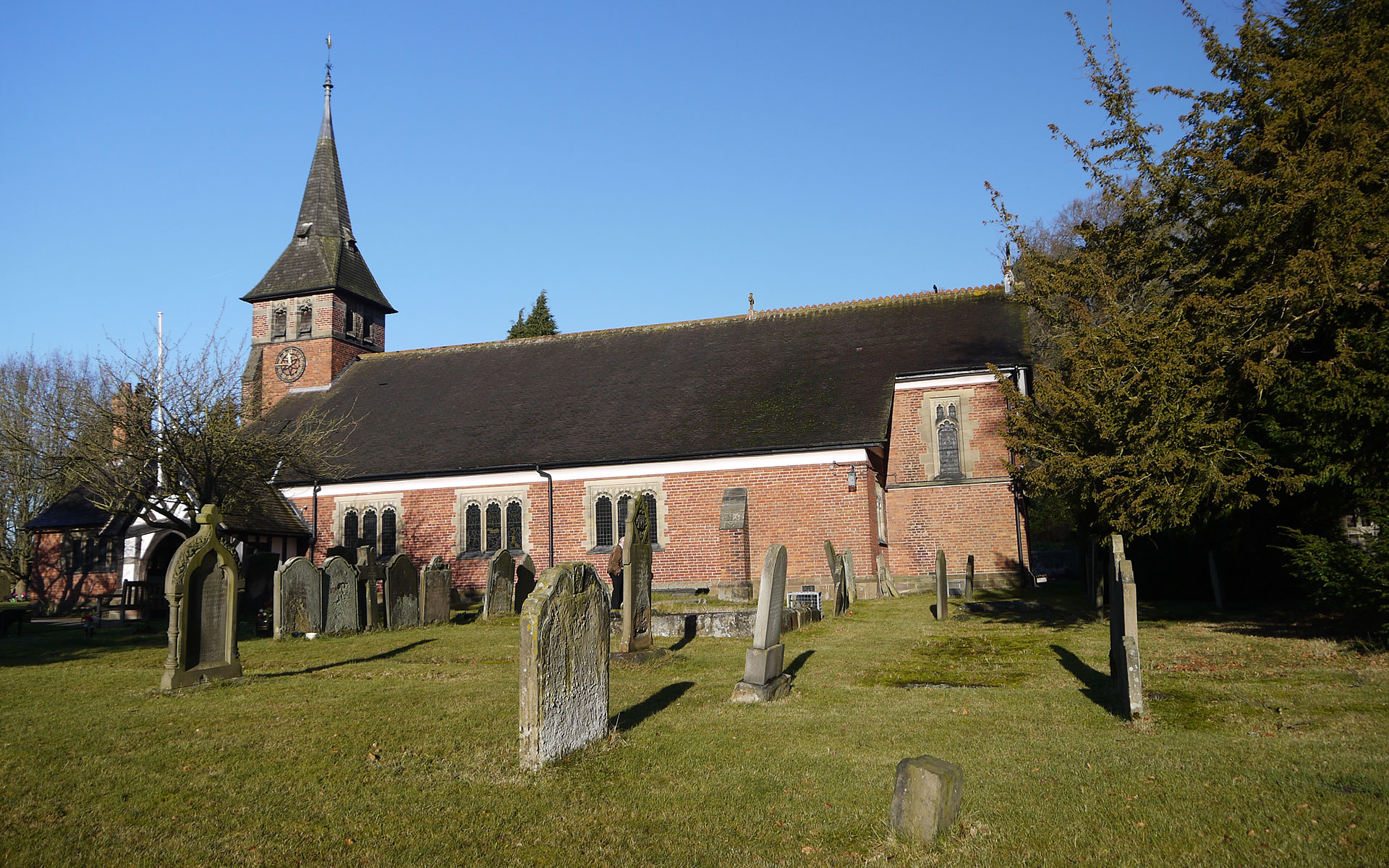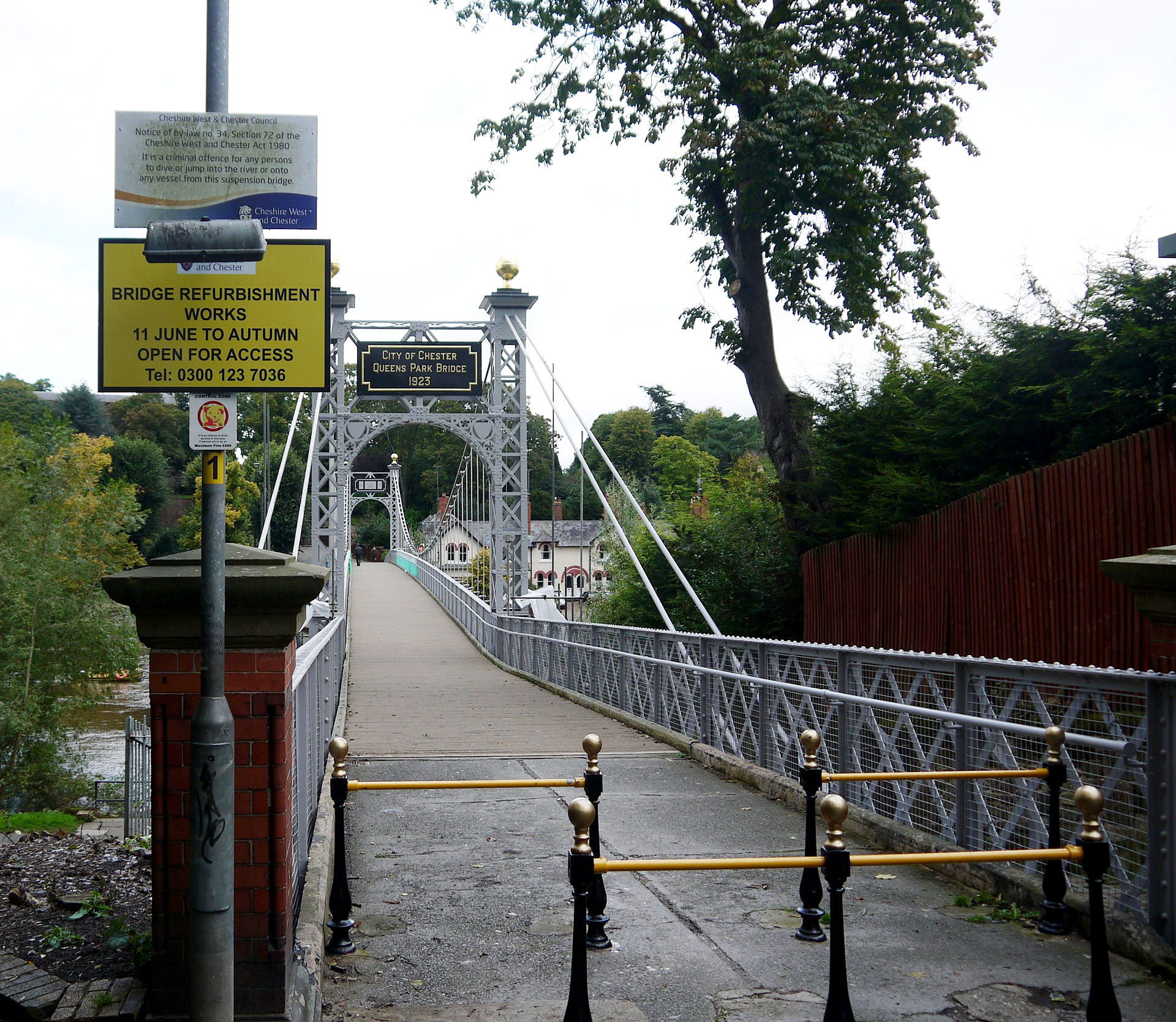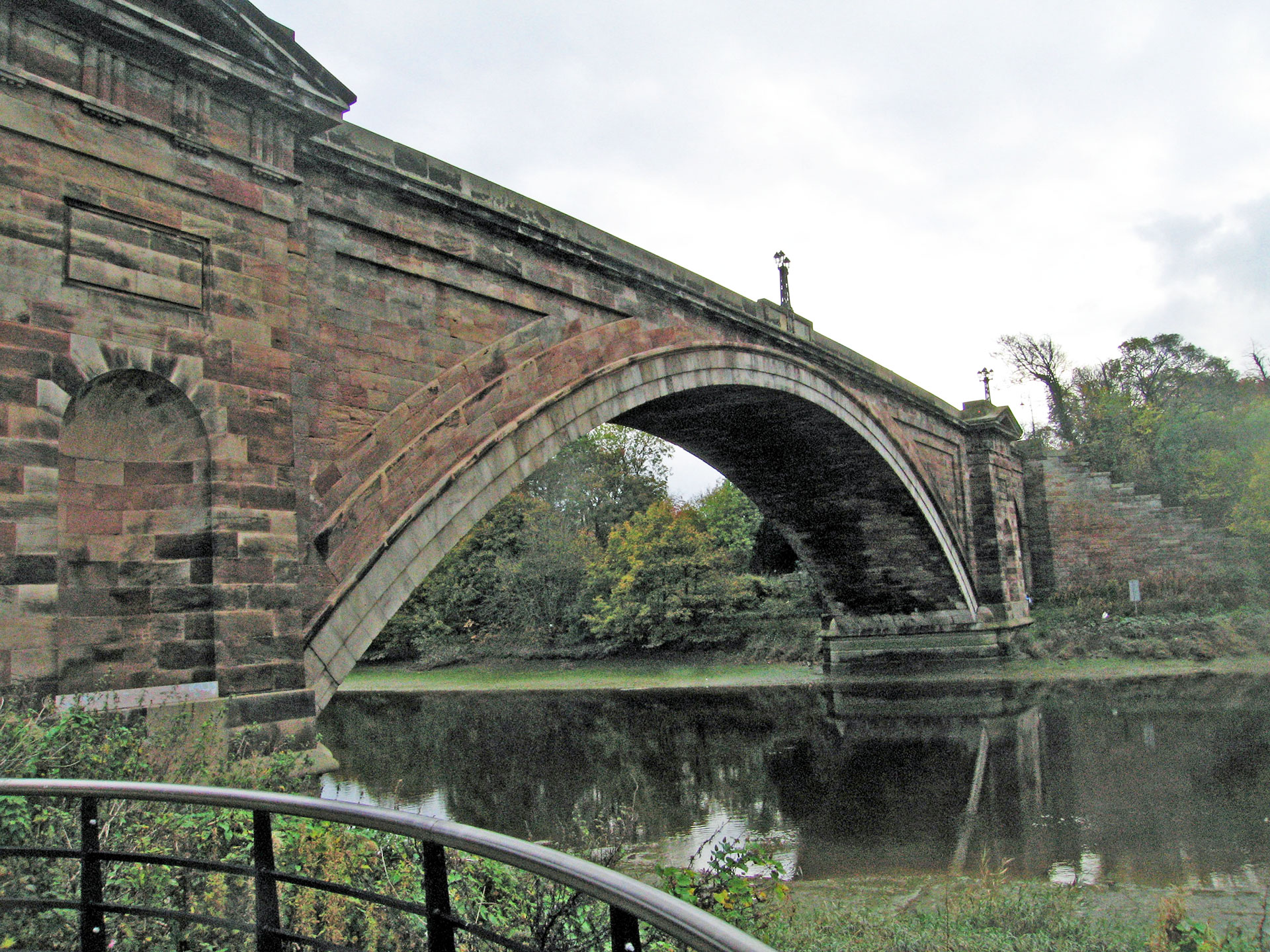A Newcomen Member’s Guide to “The Saltscape”
These notes were prepared for those attending The Society’s 2018 Symposium on The White Salt Industry. They have been dusted off and minimally updated as a contribution to the Newsletter started during the 2020 corona virus period. The term ‘Saltscape‘ has become used to describe the part of Cheshire most affected by salt extraction over the past three centuries or so.
Northwich
Lion Salt Works Museum (Northwich)
Click on image for full panoramic view – © Tony Leonard 2018
“It is well worth a good look round. Allow a couple of hours”
The Lion Salt Works is a restored historic open-pan salt making site, in the village of Marston, close to Northwich. The site lies adjacent to the Trent and Mersey Canal, close to Weaver Hall Museum and Workhouse, and the historic Anderton Boat Lift. This £10.23 million project opened in June 2015 offering a fascinating journey through the life of the country’s last open-pan salt making site.
Anderton Boat Lift
“This unique structure is about a mile walk along the canal towpath from Lion Salt Works or can be accessed directly by road”
The Anderton Boat Lift has earnt its nickname of ‘Cathedral of the Canals’ for a very good reason. Not only does it still do the job it was designed to do of lifting boats and barges the 50 feet from the River Weaver Navigation to the Trent & Mersey Canal, but it does it with the most ingenious and endearing character of any structure on the canal system. It also offers the intrepid among you a unique opportunity to access the very top of the workings.
Northwich Swing Bridges and Flood Defences
These are easily reached on foot in Northwich Town Centre (park free at Waitrose Car Park, Hayhurst Quay). The Swing Bridges are notable as they are the first ever to be supported on floating caissons (to combat the effects of salt subsidence). The flood defence system is all around you at the car park.
Between the Waitrose car park and the river is a reconstructed side-launch slipway of the type that would have been used in the days when Northwich was a busy shipbuilding centre.
Weaver Navigation
The legacy of the river navigation’s industrial history has been, in many places, the creation of special places for nature to flourish. For more information on the Weaver Navigation click here
Northwich flood defences are not well documented on the web but this government article on the opening of the flood management scheme gives some insight. Local residents will be pleased to know that they have been tested, athough after the longest drought of recent years – read here
For images and information (Historic England listings) on each of the swing bridges see below:
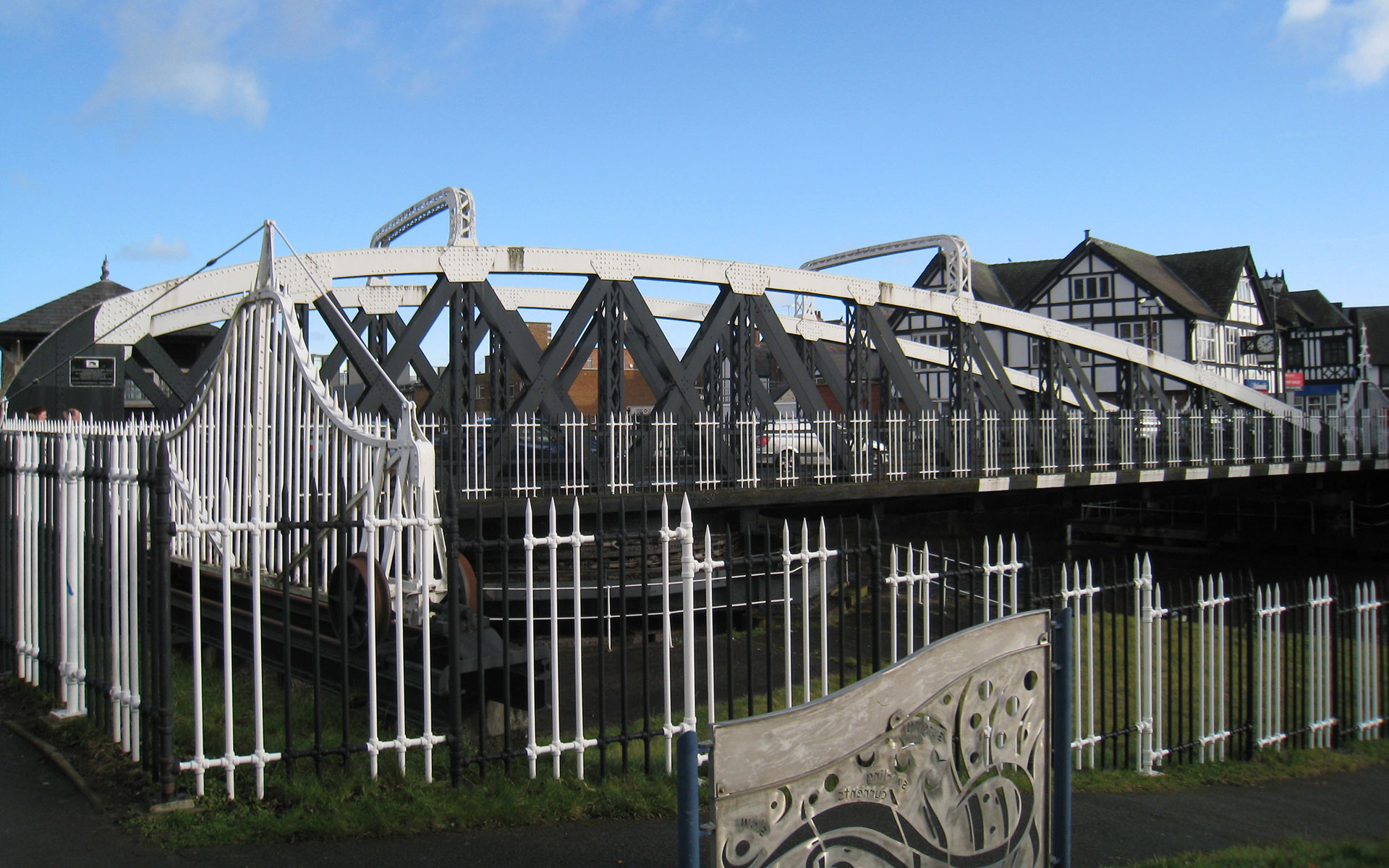
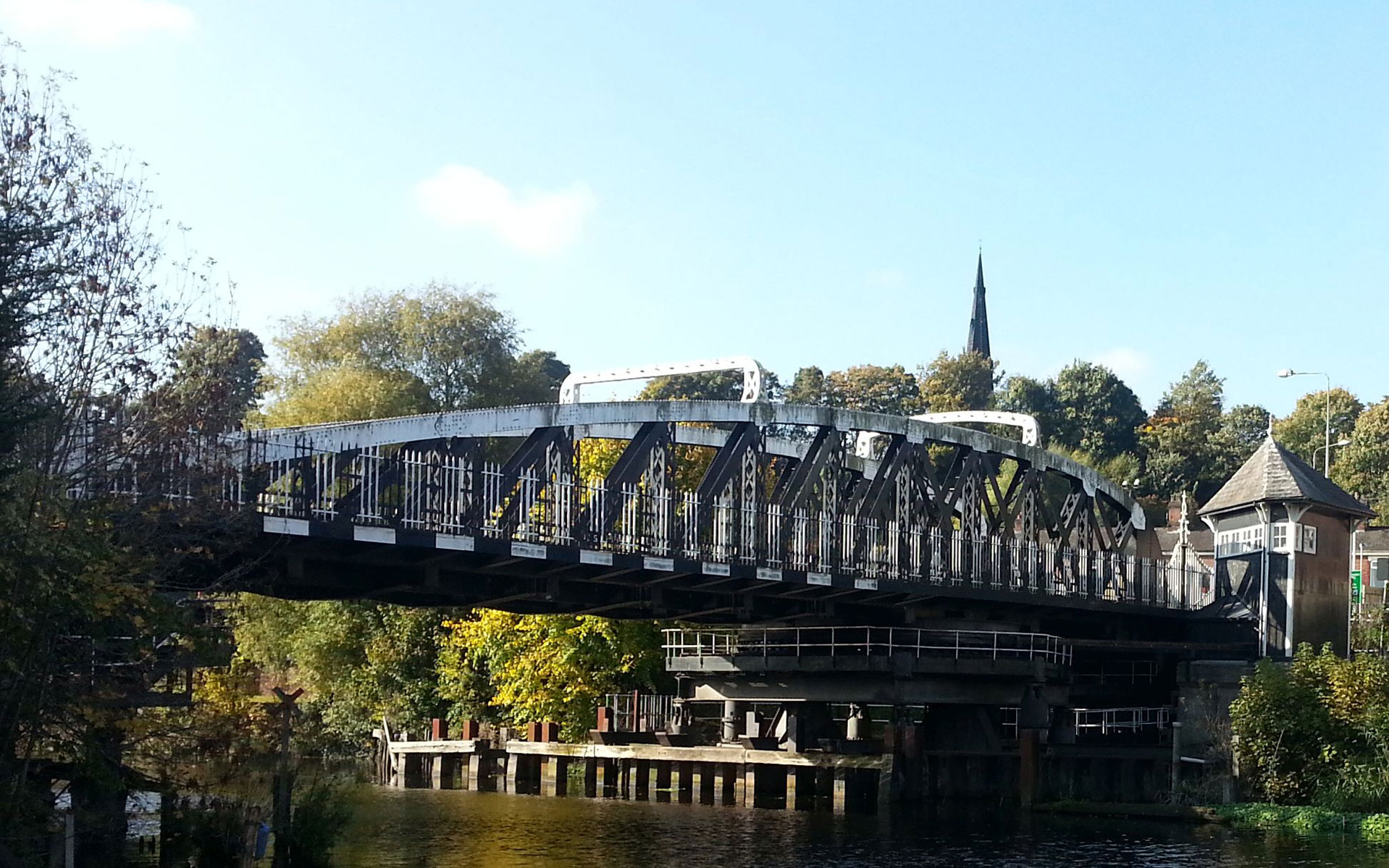
Weaver Hall Museum
Housed in the old Workhouse. Weaver Hall Museum covers the history and industry of West Cheshire.
Weaver Hall Museum and Workhouse is full of displays and tales of the history and industry of West Cheshire. The stories are told through films, reconstructions, models and vivid displays of intriguing artefacts, which relate to local industry, market towns, transport, archaeology, and the building’s former history.
The museum is housed within the old Northwich Union Workhouse building. A special exhibition in the former workhouse schoolroom explores life for the paupers, and our younger visitors can dress up and imagine themselves as workhouse inmates learning all about the 3 Rs!
Around the rest of the museum you can find out about workhouse food, discover some of the people who lived in the workhouse and visit the recreated Master’s sitting room. You may even want to challenge yourselves with their workhouse quiz or test your observation skills looking for important objects with their I-Spy trail.
: 01606 271640
W.J. Yarwood’s Shipyard
This is almost opposite Weaver Hall Museum on the other side of the Weaver. The shipyard at Yarwoods was active between 1896 and 1966. The company founder, William James Yarwood (1851–1926) served an apprenticeship at an iron foundry in Northwich. He was appointed as a blacksmith with the River Weaver Navigation. In 1896 he assumed control and renamed the John Thompson shipbuilding business, based on the west bank of the River Weaver near Northwich.
Yarwood’s built over a thousand ships such as tugs and fresh water supply vessels like the MB Fountain, a steel hulled ship built in the early 1950s and constructed using a combination of welded and riveted hull plating. Her main hull is built of 10mm steel, which is substantially thicker than the minimum required for ships of her size. Her main engine is a Lister Blackstone EV4 4 cylinder engine, which outputs ~ 180HP.
Also built at Yarwoods were C9 and Prima vessels involved in the Dunkirk evacuation.
R.A.F. Auxiliary Aquarius ended up escaping from Singapore in WW II but is perhaps of wider interest because of its link with Lawrence of Arabia. A recently deceased local resident recalled meeting Lawrence in a shop in Northwich while he was working on the Aquarius. More about this story can be found in an article in the local publication: Cheshire Magazine
An image of the Aquarius leaving Yarwood’s shipyard en route for Devonport with T E Lawrence on board can be viewed on the Cheshire Image Bank.
Northwich Rail Viaduct and Hunt’s Lock
Built by the West Cheshire Railway in 1864 – later Cheshire Lines Committee, Northwich Rail Viaduct is an impressive structure best viewed from Hunt’s Locks or from Weaver Hall Museum.
As with other locks on the Weaver Navigation, Hunt’s Lock is a pair of locks in parallel – one for vessels up to about 1000 tonnes and one for smaller vessels. Pedestrian approach is from the East by an unusual and attractive modern swing footbridge. Parking is not easy but you might find space in The Crescent CW8 3LQ from which a footpath gives easy access to Riversdale bridge and Hunt’s Lock.
Riversdale Bridge
The previous Riversdale Bridge was seriously dilapidated when finally closed in 2004. The current bridge was opened in 2010 and further information can be found at barhale.co.uk.
Pimblott’s Shipyard
Across the river upstream from Riversdale is the former Pimblott’s Shipyard. Many ships of the Clyde Puffer type were built here, including the one that starred in the TV adaptation of the Para Handy tales. More information can be found at vic27.co.uk
Continuing upstream one finds . . .
Hartford “Blue Bridge”
Built in 1938 to take traffic away from the very congested centre of Northwich, it has classic Art Deco truncated pyramids as its abutments. Grid ref SJ 647 713. It may be possible to park in the dead end of Hartford Road, Davenham, just West of the traffic lights. Alternatively, you may be able to arrange use of the car park at Hartford Hall Hotel, grid ref SJ 642 716.
Northwich by-pass is an encapsulation of UK transport history from the 1930s to the 1960s. The section completed in the 1930s is a dual carriageway with footway and cycleway. The western end was started before the outbreak of WW II and was used as a tyre dump during WW II. When completed in the late 1950s, it was built with a footway but no cycleway. The Eastern end is post-WW II and has neither footway nor cycleway.
Vale Royal Viaduct
Built by the Grand Junction Railway (later London and North Western) in 1836. Grid ref SJ 642 706.
Vale Royal Locks
A large lock and a small lock in an attractive rural setting. Grid ref SJ SJ 640 703.
https://weaver.britainswaterways.co.uk/history/vale-royal-locks
https://historicengland.org.uk/listing/the-list/list-entry/1139183
Walk along the Weaver to see Hunts Lock and Vale Royal Lock
https://www.visitcheshire.com/things-to-do/two-locks-walk-p176681
This easy walk shows the features noted above from Northwich Railway Viaduct to Vale Royal locks.
Acton Swing Bridge
Opened in 1933, it was built using an 1893 design by J.A. Saner, the designer of the Northwich swing bridges. The site allowed Saner to design a more conventionally symmetrical bridge than those reuired by the constrained spaces in Northwich. Nowadays it is difficult to appreciate that less than 50 years ago, 1000 ton coasting vessels plied along this stretch with sufficient frequency to make swing bridge closures a significant inconvenience for road users.
Please do not park below the bridge. There is usually space on the verge adjacent to The Leigh Arms. Grid ref SJ 601 761.Following the River Weaver downstream brings you to the next three points of interest.
Dutton Locks
Another fine set of locks on the Weaver Navigation. Grid ref SJ 58633 76940.
https://historicengland.org.uk/listing/the-list/list-entry/1216524
Dutton Horse Bridge
Dating from 1915-1919, it was also designed by Saner. Well described in the grade II listing as “an elegant structure in the functional waterways tradition”. It is one of the earliest remaining examples of a laminated timber structure. Grid ref SJ 584 767.
https://historicengland.org.uk/listing/the-list/list-entry/1139138
Dutton Railway Viaduct
Built by the Grand Junction Railway (later London and North Western) in 1836. The most impressive railway viaduct of its era.Grid ref SJ 581 764.
https://historicengland.org.uk/listing/the-list/list-entry/1216523
Middlewich
An important centre in Roman times whose importance returned in the canal era. Attractive canal-side walks. Well documented and enthusiastically supported by the Middlewich Heritage Trust.
Winsford
The only rock salt mine in Britain is in Winsford. The operators no longer provide tours. Park at SJ 656 669 to explore the East side of the Weaver where there are interpretation boards with information about the local salt industry. There is spectacular evidence of subsidence below the road bridge at SJ 6553 6635.
Compare the waterline with the stone courses
The Mid-Cheshire Salt Country
Architecture of the area
The area between Northwich and Chester is very rich in work by the late 19th century architect John Douglas.
http://www.d2architects.co.uk/the-life-and-times-of-john-douglas-1508.html
His designs of estate buildings and of churches set the pattern for many villages in the west of Cheshire. Fine examples fairly close to Northwich are St John’s Hartford (SJ 637 722) , St John’s Sandiway (SJ 605 711), St Mary Whitegate (SJ 629 693) with its “broken” spire and a youthfully exuberant design at the United Reformed Church in Over Square, Winsford. See: http://winsfordurc.org.uk
The area also has some good examples of “Cheshire fences”. These are metal fences painted mainly in white but with every third, fourth or fifth vertical painted black.
Chester
Dee Railway Bridge
The site of the collapse of Stephenson’s Cast Iron Bridge in 1847
http://www.geograph.org.uk/photo/1059713
http://anengineersaspect.blogspot.com/2009/07/the-dee-railway-bridge-disaster-of-1847.html
The collapse of this bridge had an important consequence for bridge construction as the subsequent Royal Commission resulted in a series of experiments that guided bridge design thereafter.
Our Past President, the late James Sutherland, looked at the work of Stephenson’s assistant Charles Wild in re-working the very similar bridge Stephenson had designed for the Leopold Railway’s crossing of the Arno in Italy. Wild’s redesign involved a wrought iron component exerting tension on the lower part of the cast iron beam. Sutherland suggests that this was “pre-stressing” 80 years or so before Freyssinet. The full paper is: “The Birth of Prestressing? Iron Bridges for Railways 1830 to 1850” James Sutherland, Int. J. For the History of Engineering & Technology, Vol. 79 No. 1, January, 2009, 113-130.
Chester Old Dee Bridge
https://historicengland.org.uk/listing/the-list/list-entry/1375850
Chester Suspension Bridge (Queen’s Park Bridge)
Chester Grosvenor Bridge
At the time of its construction, this was probably the longest stone arch in the world.
https://historicengland.org.uk/listing/the-list/list-entry/1375839
Except where otherwise noted, all photos © Philip Ingram 2000-

